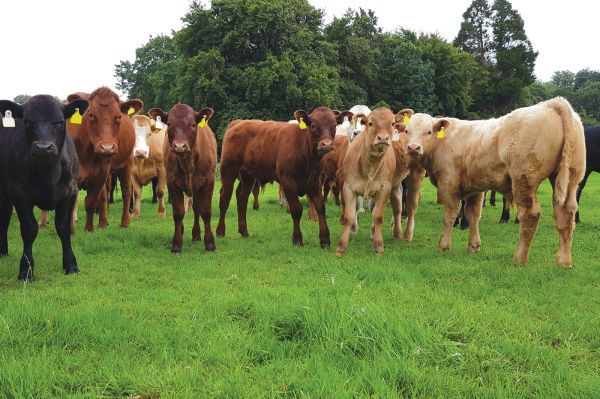No stress: Are you prepared for weaning and housing this autumn?

Autumn represents a critical risk period due to the routine weaning and housing of cattle. Environmental changes, dietary changes, and the potential mixing of cattle may induce a stress response. These stressors compromise the immune function of cattle, leading to increased susceptibility to diseases, particularly BRD.
BRD is a complex disease entity involving an interaction between the animal, environment, and infectious agents. Pneumonia is a common clinical manifestation of BRD. There are multiple infectious agents such as bacteria, viruses, and parasites associated with BRD. Frequently a primary viral infection (e.g. RSV) compromises lung defence mechanisms, predisposing to bacterial infection (e.g. Mannheimia haemolytica) of the lower respiratory tract.
On the lookout
Clinical cases may present with all or some of the following clinical signs:
- Nasal discharge;
- Ocular discharge;
- Increased rate and effort of respiration (pant);
- Fever – temperature greater than 39.5⁰C; and
- Poor appetite and coughing.
Interestingly, however, the cases you see on your farm are only the tip of the iceberg as there are often subclinical cases.
BRD is a significant disease as it is the most frequently diagnosed cause of death in cattle greater than one month of age in Ireland. Economic implications of the disease are not only restricted to mortalities and treatment but long-term implications on productivity. Notably, it can take 59 days longer to finish cattle that presented with overt clinical signs of pneumonia. Therefore, it is vital to mitigate stress and implement control measures at weaning and housing. A multifaceted approach to controlling BRD must be taken which includes management, parasite control, hygiene, biosecurity measures and vaccination.
Recommendations at pre/post-weaning:
- Castrate at least four weeks prior to weaning or two weeks post-weaning;
- Introduce concentrates to calves four weeks prior to weaning, gradually increasing to an allowance of at least 1kg/day at weaning;
- Conduct a two-stage weaning approach (anti-suckling device with fence-line contact);
- Remove cows and leave calves in familiar surroundings;
- Avoid abrupt weaning/group disruption by removing several cattle;
- Implement a strategic worming programme during the grazing season particularly for lungworm; and
- Carry out a vaccination programme for respiratory disease (voluntary action of the Beef Welfare Scheme 2025).
Recommendations for housing:
- Avoid overcrowding or mixing age groups in the same airspace;
- Leave a period of at least two weeks between housing and weaning;
- Quarantine newly purchased animals;
- Provide a supply of fresh clean water;
- Dose animals after housing with an appropriate anthelmintic and consider fluke control if this is relevant to the animals’ risk profile;
- Vaccinate all animals in a group pre-housing and newly purchased when settled;
- House on a dry day;
- Have adequate lighting in sheds so sick animals can be detected early; and
- Isolate sick animals and treat appropriately as directed by your veterinary practitioner.
Vaccine selection
Vaccines incorporated into a vaccination regime will vary from farm to farm and should take into account the farm system, history of disease, risk factors associated with the farm in question, previous diagnostic laboratory results and/or postmortem results. Vaccination programmes will vary depending on the product used. It is recommended to vaccinate in advance of weaning and housing to enable the animal to respond as each vaccine takes a certain period to become effective. It is important to note that vaccination alone is not sufficient to prevent disease but should be in conjunction with good husbandry practices.
Implementing the recommendations outlined above will aid in reducing the risk of pneumonia and ultimately positively impact health and welfare of cattle. Take a proactive approach by vaccinating to minimise potential losses. It is highly recommended to consult with your veterinary practitioner to determine the most appropriate management and vaccination programmes for your weanlings this autumn.




